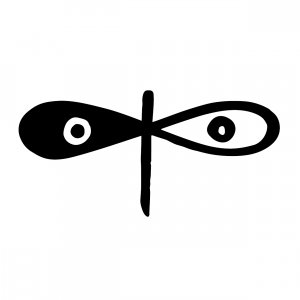
Nicoletta Poo
Author's books
La dea stanca
Vita di Lina Bo Bardi
Zeuler R. Lima
pages: 396 pages
«Architects must be in touch with living, because living is everything»: words that would appear to have been on Lina Bo Bardi’s mind as early as 1946, when boarded a ship to Rio de Janeiro, her eyes filled with curiosity and her mind open, leaving behind the ruins of an Italy devastated by war. Travelling inside her were both Achillina, the im
In miniatura
Perché le cose piccole illuminano il mondo
Simon Garfield
pages: 216 pages
We are more likely to glean an idea of the universe by creating infinitesimal objects than by remaking the whole sky.
Sculptor Alberto Giacometti put it like this: in order to grasp the truth and give it tangible form, he often ended up reducing the scale of what was around him. It must be said, shrunken objects have profoundly revealing qualities
Dark Side of the Boom
Controversie, intrighi, scandali nel mercato dell'arte
Georgina Adam
pages: 254 pages
Since 2005, the proceeds from sales in the art market have almost doubled, surpassing 60 billion dollars yearly. Art fairs and events have proliferated like mushrooms; auctions reach dizzying figures and the overall demand for artwork has increased exponentially. And yet, this peculiar gold rush is only part of the story. Looking more closely, behi
Duty Free Art
L'arte nell'epoca della guerra civile planetaria
Hito Steyerl
pages: 212 pages
Gigantic secret museums crop up nowadays in no-man’s-lands that circumvent national sovereignties and are closed to the public. They are duty-free storage facilities where works of art – albeit sealed in their packing cases – are used as alternative currency for the circulation of assets worth billions from one end of the world to the other:
Un monumento al momento
Medardo Rosso e le origini della scultura contemporanea
Sharon Hecker
pages: 320 pages
An artist loved by other artists, starting with Boccioni who praises his subversive power, Medardo Rosso (1858‒1928) produced revolutionary work that has never ceased to influence each new generation of sculptors. A forerunner to trends that were only fully developed in the 20th century, Rosso enjoyed extraordinary success after his death, making
Museologia radicale
Ovvero, cos'è “contemporaneo” nei musei di arte contemporanea?
Claire Bishop
pages: 88 pages
The future of the public museum has never seemed more at risk: rather than representing the diverse interests of society as a whole, in most cases it has been reduced to a vehicle for promoting block-buster events and protecting the privileges of private concerns, giving rise to temples of amusement and entertainment that are unable to grasp the ac
Curatori d'assalto
L'irrefrenabile impulso alla curatela nel mondo dell'arte e in tutto il resto
David Balzer
pages: 168 pages
From image makers to playlists, from gourmet menus to singing festivals and even VIP weddings, nowadays everything is “curated by”, and “curate”, “curator” and related terms are on the lips and on the curriculum of everyone who wants to make an impression and stand out from the crowd. Whereas even the most disparate companies have adopt
Robert Mapplethorpe
Fotografia a mano armata
Jack Fritscher
pages: 352 pages
New York, autumn 1978. Thursday evening at eight o’clock on the dot, Robert Mapplethorpe, bold and elegant in his black leather jacket, descends the stairs and makes his entrance into the main room of the notorious Mineshaft, the buzzy underground men-only club, temple and haven for every form of perversion. This is the sparkling voracious decade
Sei lezioni di disegno
William Kentridge
pages: 160 pages
Art, says William Kentridge, is its own form of knowledge. It is not a simple integration of the real world, nor can it be considered only in the rational terms of classic academic disciplines. The studio is the crucial place for the creation of meaning: it is the place where linear thinking gives way to eye, hand, paper and charcoal, to the materi
Che cos'è l'arte
Arthur C. Danto
pages: 126 pages
This is the eternal question that the philosopher and critic Arthur C. Danto tackles in an essay that is part philosophical dissertation, part autobiographical musings. Taking his distance from the view that reduces art to what is regarded as such in an institutional context, or those who even consider it to be indefinable, the author identifies va









